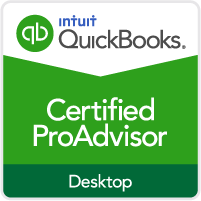Accounting automation has come a long way in the last few years, and the process of handling invoices and receipts is included in those changes. No longer is there a mountain of paperwork to deal with. In this article, we’ll explain some of the changes in this area.
Vendor Invoices
Most invoices are now sent electronically, often through email or from accounting system to accounting system. Some accounting systems allow the invoice document, usually in PDF format, to be attached to the transaction in the accounting system. This feature makes it easy for vendor support questions as well as any audit that may come up.
Some systems are smart enough to “read” the invoice and prepare a check with little or no data entry. Others are able to automate three-way matching – this is when you match a purchase order, packing slip, and invoice together – so that time is saved in the accounts payable function.
Receipts
Today’s systems allow you or your bookkeeper to scan in or take cell phone photos of receipts – whether cash or credit card – and then “read” them and record the transaction. This type of system cuts way down on data entry and allows the accountants to focus on more consultative work rather than administrative work.
Some vendors will email you receipts so all you have to do is use a special email address where your accountant is copied or forward the receipt as you receive it.
The biggest challenge for business owners is getting into the habit of photographing the receipt and sending it to the accountant. The days of shoebox receipts are not completely over, but cloud-savvy business owners are definitely enjoying the alternative options of today’s paperless world.
Approvals
Some systems automate bill approval. This is especially handy for nonprofits or companies with a multi-person approval process. It cuts down on approval time and the time it takes to pay the bill.
New Systems
Here is a short list of new systems that automate a part of the vendor payment or receipt management system. There are a lot more, in addition to your core accounting system, and all of them have different features, platforms, software requirements, integration options, and pricing.
- Bill.com
- Hubdoc
- Receipt Bank
- Expensify
- SmartVault
- Doc.it
- Tallie
- Concur
- LedgerSync
- ShoeBoxed
- ShareFile
- DropBox
If you are interested in finding out more about automating your accounts payable invoices or receipts, please reach out anytime.



 Want a free consultation with us? Give us a call at
Want a free consultation with us? Give us a call at 
